Rava dosa (also known as Suji ka Dosa) is a quick and popular variant of dosa from the South Indian cuisine. These are crispy, netted and thin crepes made with semolina (rava or cream of wheat), rice flour, all purpose flour and spices. These are incredibly easy to make and require no grinding or fermentation, unlike the traditional Dosa Recipe. Make a truly crispy Rava Dosa recipe – one that you will make again and again for a quick breakfast or snack.
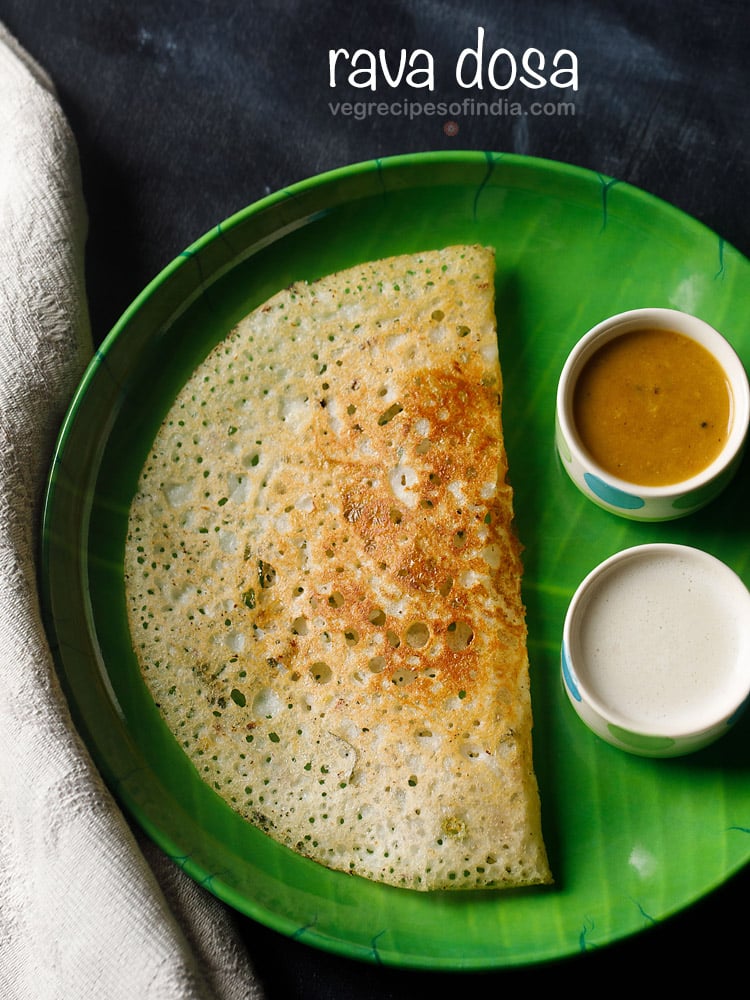
About Rava Dosa Recipe
Rava dosa is one of the quick breakfasts I make on occasion. At home, we prefer to add onions and some spices to them.
So I usually add onions, ginger, green chilli and some spices to the batter. At times I even add some chopped cashews. The addition of these ingredients makes the dosa more flavorful and tasty.
You can choose to make the suji ka dosa plain or you can spice it up by adding chopped onions, curry leaves, herbs and spices etc like I have done here.
Here I am sharing my mom’s recipe which is made without curd (yogurt) or buttermilk. Plain water is used to make the batter.
Table of Contents
You can even use curd or buttermilk instead of water to make the batter. This recipe can also be halved or doubled or tripled according to your needs.
If you do double the recipe, then use two tawa or skillets and cook the dosa side by side on two stovetop burners.
A thin batter is made of sooji, rice flour, maida and water or buttermilk. The batter is spiced with onions, green chilies and some more herbs & spices.
The batter is then poured on a hot tawa (griddle) to get netted effect on the dosa. The dosa is cooked till golden crisp and then served hot.
To make perfect crispy instant rava dosa which has a netted texture, the batter has to be thin. So always remember that the batter should be thin, runny and easy to flow.
Also allow some soaking time for rava or suji, so that they soften. I usually mix everything and set the batter aside for 20 to 30 minutes.
How to make Rava Dosa
Make Thin Batter
1. Take ½ cup unroasted fine rava, ½ cup rice flour and ¼ cup all-purpose flour in a bowl.
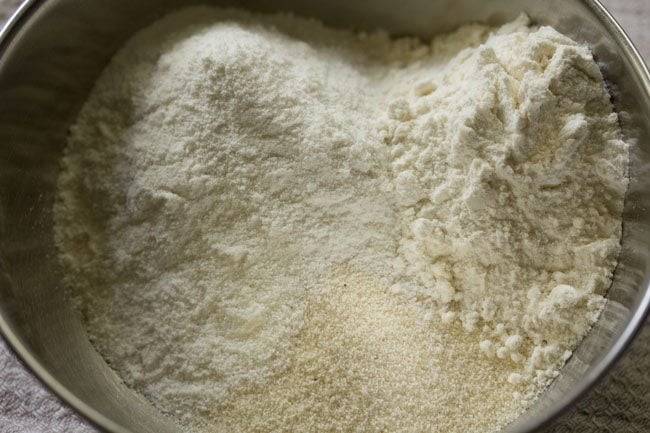
2. Then add ⅓ cup chopped onions, 1 or 2 green chillies (about ½ to 1 teaspoon finely chopped), and ½ teaspoon finely chopped ginger.
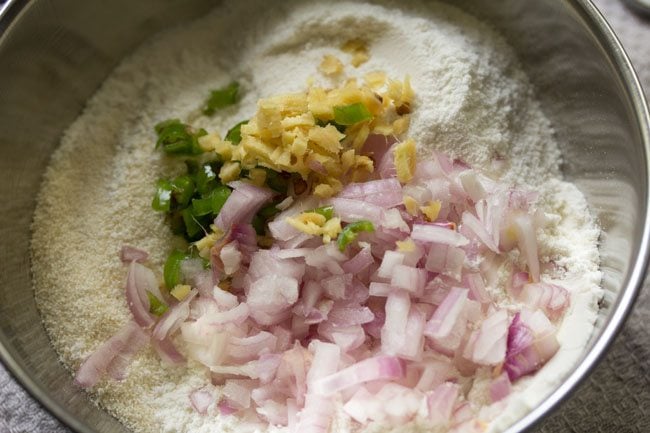
3. Also add ½ teaspoon crushed black pepper, ½ teaspoon cumin seeds, 8 to 10 curry leaves (about 1 tablespoon chopped) and salt as required.
At this point you can also include 1 to 2 tablespoons of chopped coriander leaves, 2 tablespoons of fresh grated coconut or 1 to 2 tablespoons of chopped cashews.
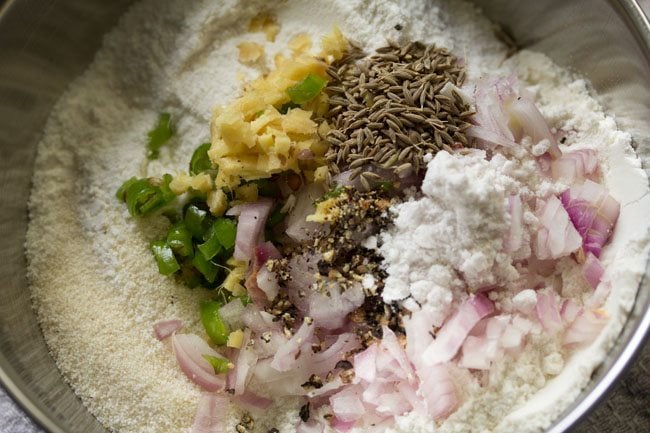
4. Add 2.25 to 2.5 cups water. Depending on the quality of rava or suji and rice flour, you can add less or more water – from 2 to 2.5 cups water.
I added 2.25 cups of water. You can also use buttermilk instead of water.
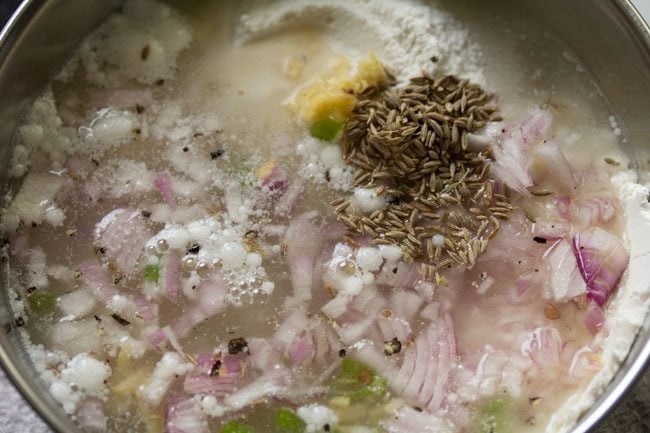
5. Whisk till smooth without any lumps. The batter has to be flowing and thin.
Tip 1: If the batter looks thick or has a medium consistency, then add more water.
Tip 2: If the batter looks very thin and runny, then add some rice flour.
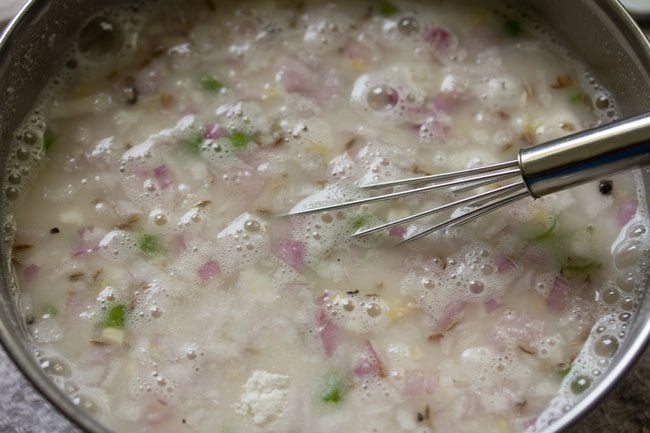
6. Cover and let the batter rest for 20 to 30 minutes.
Once the batter rests, you will see that the rava and the flours have settled down and the water will be floating on top.
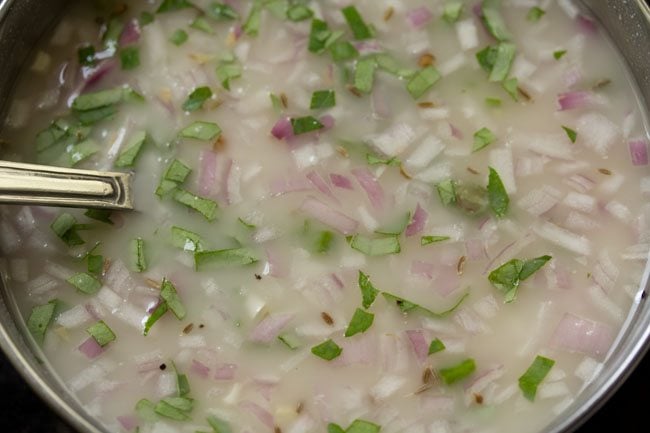
7. Before preparing dosa, mix the batter very well so that the flours and semolina that are at the bottom of the bowl are mixed evenly again.
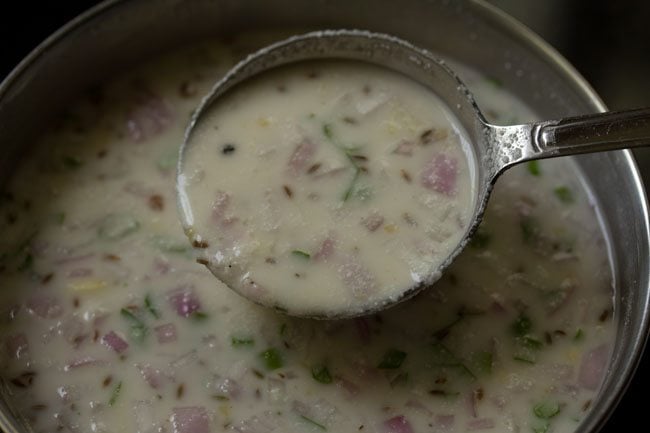
Make Rava Dosa
8. Spread some oil on the tawa or skillet. Do make sure that the tawa is hot. Keep the flame to medium or medium-high before pouring the dosa batter.
You can also use butter or ghee or coconut oil. Sometimes I use coconut oil and it gives a really good flavor.
If using a cast iron skillet, I recommend to use one that is well seasoned. So that the batter does not stick to it. You can check below my tips on seasoning the cast iron skillet.
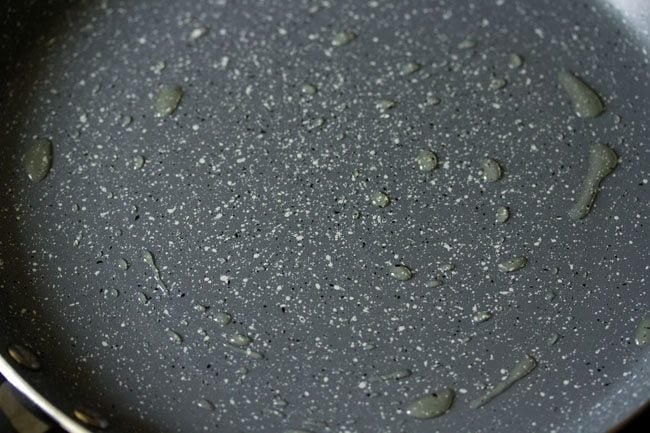
9. With a ladle pour the dosa batter. Start from the edges move towards the center.
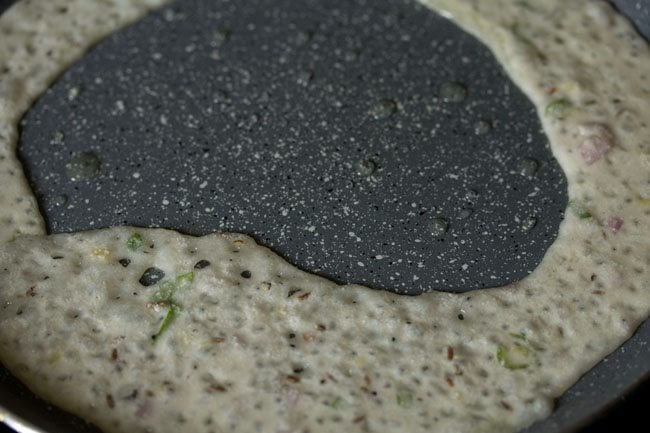
10. If there are big or small gaps, then fill them lightly with the batter.
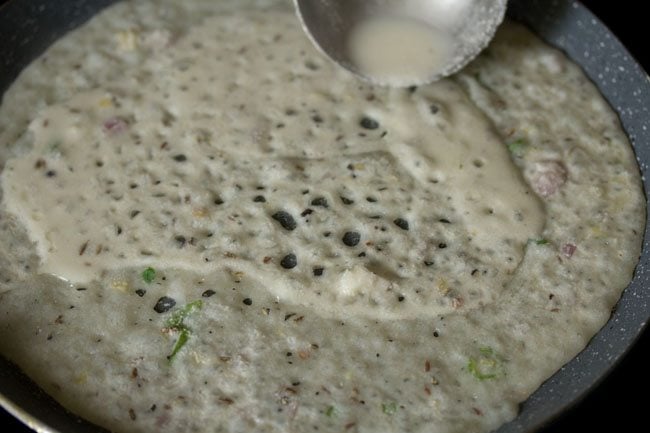
11. On a medium-low to medium heat, cook the dosa. If the tawa or pan becomes too hot, then you can reduce the heat.
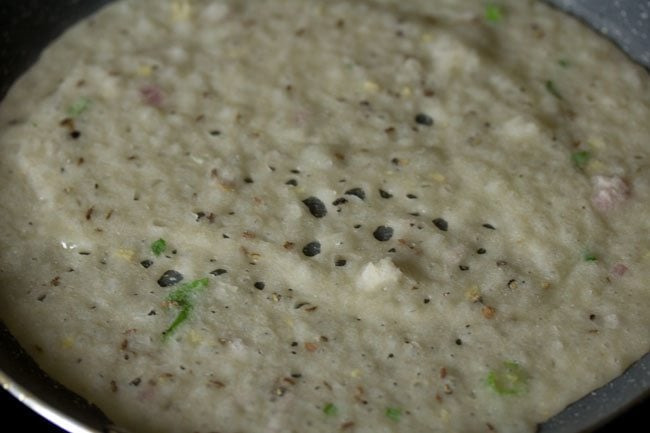
12. When the top side firm up and looks cooked, then sprinkle ½ to 1 teaspoon oil on the top and sides.
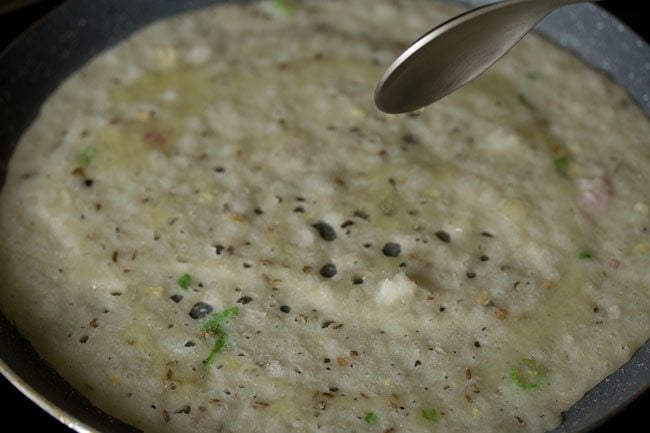
13. Spread oil all over the dosa with a spoon.
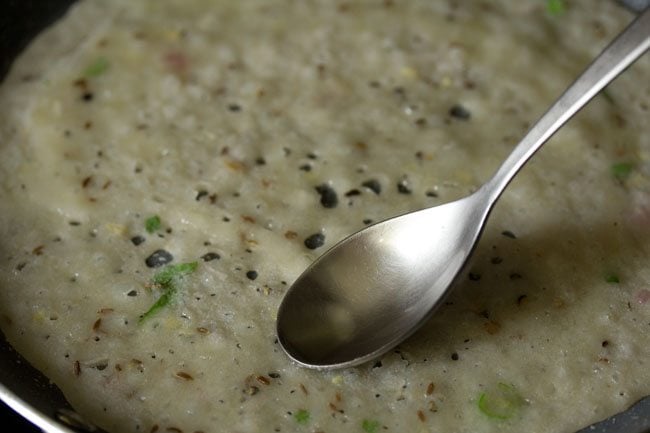
14. Instant rava dosa takes a little longer time to cook than the regular plain dosa.
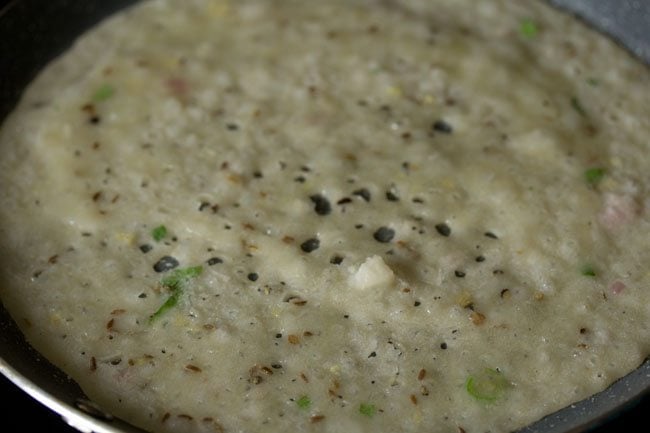
15. Cook till the base is golden and crisp. The edges will also separate from the pan.
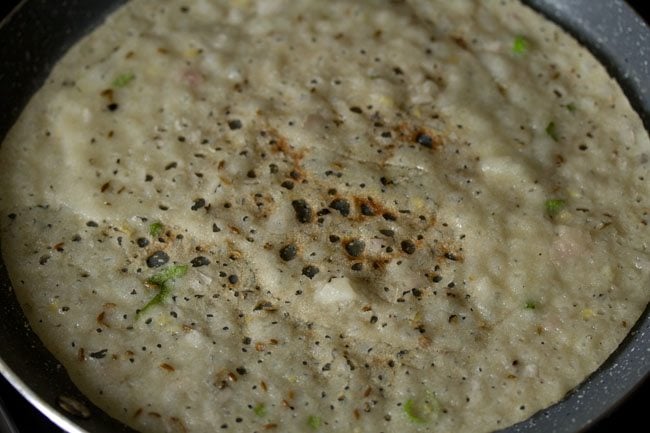
16. The longer you cook these, the more golden and crispy they become. Flip and cook the second side for ½ to 1 minute or as needed.
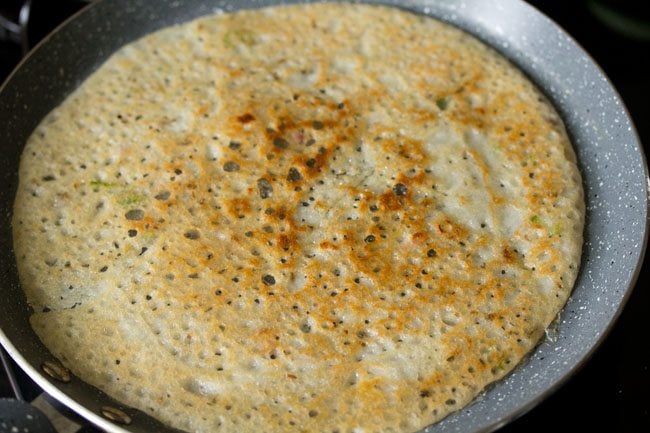
17. Fold and then serve instant rava dosa hot with Coconut Chutney and Sambar.
The flours settle down at the bottom of the batter. So you have to stir and mix the batter very well every time you make dosa.
In case the batter becomes thick after making a few dosa, then add some water and stir again. Make all dosa this way.
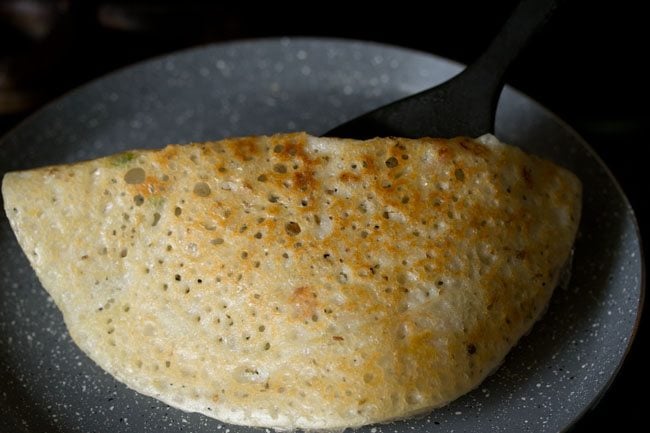
18. Serve rava dosa hot. For the best taste serve these as soon as they are made.
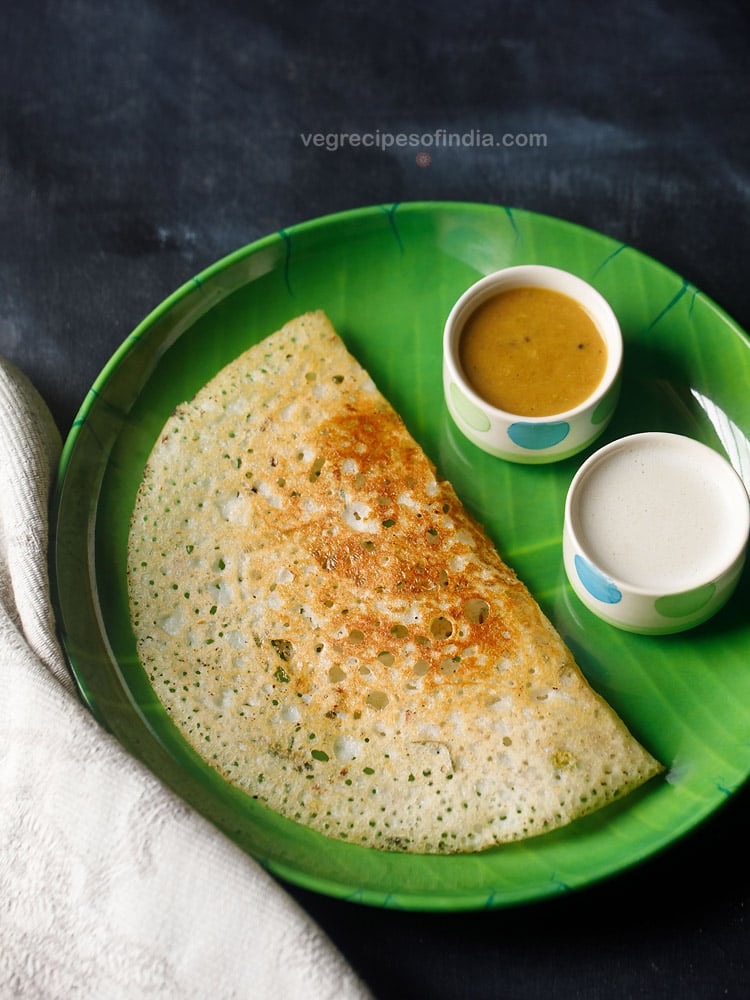
Serving Suggestions
Rava Dosa or Suji ka Dosa can be served with sambar, Coconut Chutney or Idli Dosa Podi or any chutney of your choice. To make it more filling, you can serve it with Potato Masala and make a delicious Masala Rava Dosa.
Rava dosa also pairs well with Peanut Chutney, Onion Chutney, Tomato Chutney and Ginger Chutney.
Variations
With the basic instant rava dosa recipe, many variations can be made.
- Increase or decrease any of the herbs and spices and make a variation. Example: you can make pepper rava dosa by increasing black pepper or onion rava dosa by increasing amount of onions.
- Add ghee or butter and make ghee rava dosa or butter rava dosa. Serve rava dosa with potato masala and you get masala rava dosa.
If you are wondering what is Rava
Rava stands for suji or semolina or cream of wheat. Hence this dosa is named after one of its main ingredients. The type of rava used is the fine variety of rava. You could also use Bombay rava to make these crispy crepes.
Rava is coarsely or finely ground husked wheat. Depending on the type of dish, the type of rava is used accordingly. E.g fine rava is used in making Rava Idli, Upma, sooji halwa, sheera etc.
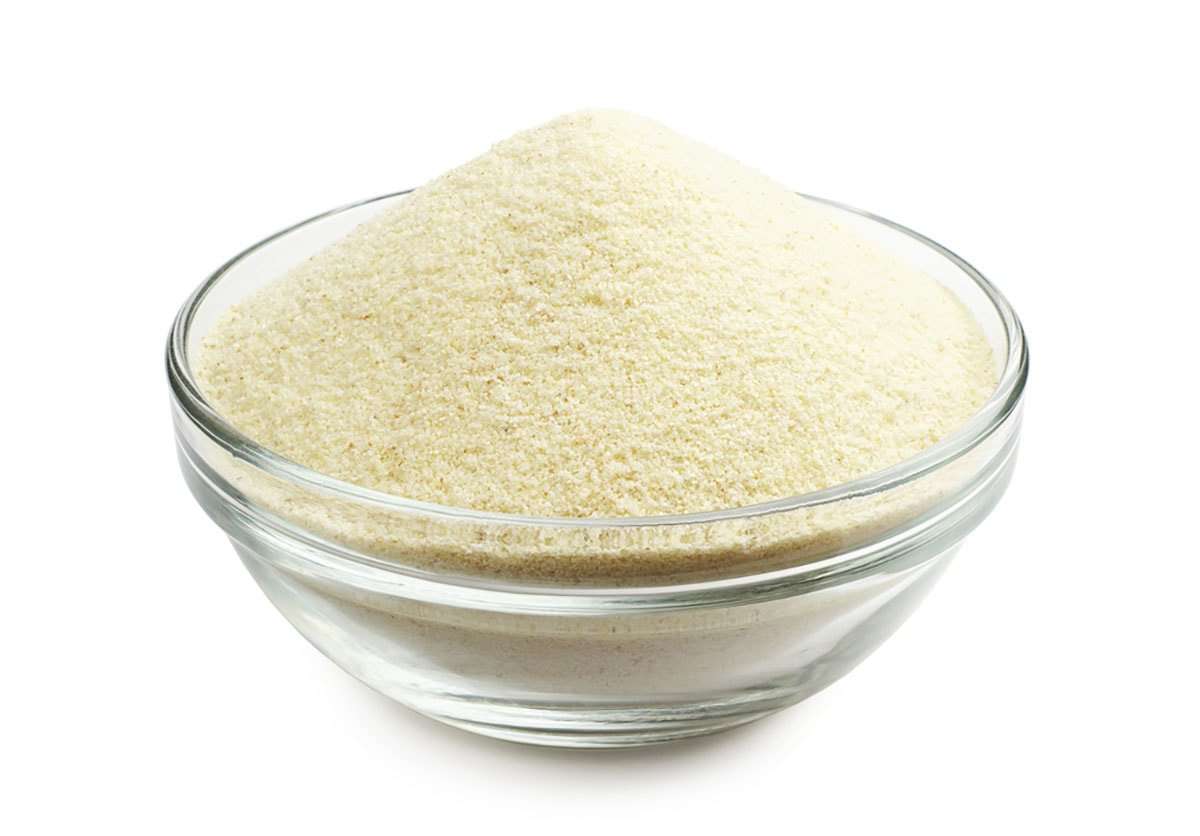
All the three terms suji, rava, semolina flour and cream of wheat mean the same. In western and southern parts of India, the word ‘rava’ is used.
In northern parts of India the word ‘sooji’ or ‘suji’ are used. Thus rava dosa can also be called as ‘suji ka dosa’ or ‘suji dosa’.
Expert Tips
- Soaking rava: Before making them, always allow a soaking time of 20 to 30 minutes for the batter.
- Batter consistency: The batter has to be thin and of pouring consistency. Even if the batter is of medium consistency, the Suji ka dosa will be soft and not crisp. When you make the first dosa then you will come to know whether you are getting the crisp and netted effect or not. If not then you will need to add some more water. Instead of water, you can also add buttermilk to the batter.
- Temperature of skillet or tawa: When pouring the batter, the skillet or tawa has to be hot. When you pour the batter, it will sizzle when it comes in contact with the hot tawa. So keep the heat to medium or medium-high. When cooking instant rava dosa, you can reduce the flame if the tawa becomes too hot.
- Pouring batter: The batter also has to be poured from a slightly more height than what is the norm. This will give you the netted effect on the Suji ka Dosa. When pouring the batter, pour from the edges first and then move towards the center.
- Cooking time: Rava dosa takes more time to cook than the regular dosa.
- Mixing batter: Every time before pouring the batter on tawa, you have to mix it very well as the flours and rava settle down at the bottom of the batter. After making some rava dosa, if the batter looks slightly thick, then you can add some more water.
- Pan type: Always use a heavy or a thick bottomed tawa or pan, so that the rava dosa does not stick to the pan. You can even use cast iron pan.
Your Questions Answered
Why rava dosa sticks to the pan or skillet?
When making rava dosa or any dosa for that matter, always use a seasoned pan. Iron tawa or iron skillets are the best for making dosa.
Seasoning means that the pan is ready to be used or has been used earlier to make dosa. Never use a pan or tawa in which you make roti or chapati as then the dosa will stick on the tawa.
Usually rava dosa does not stick on a non-stick pan if it is heavy or thick-bottomed. In case the dosa starts sticking on the non-stick pan, then make a few small dosa initially on it and later the dosa won’t stick.
How to season iron tawa (cast iron skillet)
- For an unseasoned or new iron tawa or iron skillet firstly heat the tawa. Spread some oil all over. Keep the flame to a medium or high and let the tawa get hot for 1 to 2 minutes.
- Lower the flame and wipe this oil with a cotton napkin or a paper towel. Spread another layer of oil and repeat the process. Lower the flame and then again wipe this layer of oil. Repeat this process once or twice.
- Now spread oil again. Make a small rava dosa. See if it sticks or not. If it sticks then repeat the seasoning method for 1 or 2 times more. Initially a few dosa, in the beginning, will stick, but later they won’t stick.
- After making all the dosa, when the iron tawa cools, then rinse tawa also and wipe it dry. You can then spread a layer of oil on it. Next time before making rava dosa, heat and then remove the oil and then start making dosa.
- You can even season the iron pan a few days before you plan to make rava dosa recipe. Repeat the above process of spreading oil and removing it, 3 to 4 times. Then lastly spread the oil. Switch off the flame.
- Keep the pan with the oil on it for a few days. Before making rava dosa, heat the pan. Then with a cotton napkin or paper towel wipe the oil. Spread oil again and heat it. Then wipe the oil again and then start making dosa.
More Dosa Recipes To Try!
Breakfast Recipes
Karnataka Recipes
Breakfast Recipes
Breakfast Recipes
Please be sure to rate the recipe in the recipe card or leave a comment below if you have made it. For more vegetarian inspirations, Sign Up for my emails or follow me on Instagram, Youtube, Facebook, Pinterest or Twitter.
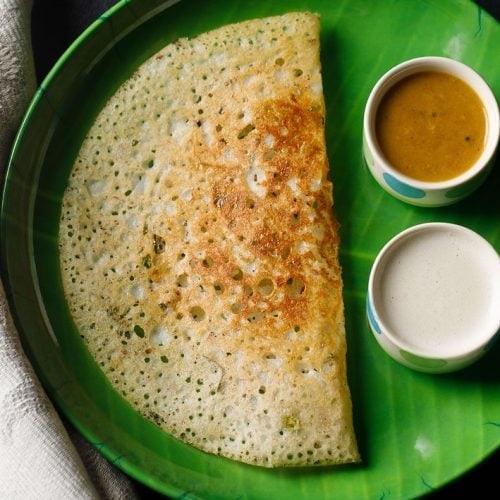
Rava Dosa Recipe (Quick & Crispy)
Ingredients
- ½ cup rava – un-roasted and fine textured (suji or fine semolina)
- ½ cup Rice Flour
- ¼ cup all-purpose flour
- ½ to 1 teaspoon green chillies – finely chopped or serrano peppers or 1 to 2 green chillies
- ⅓ cup onions – finely chopped
- ½ teaspoon ginger – finely chopped
- 1 tablespoon or 8 to 10 curry leaves – chopped
- 1 to 2 tablespoons coriander leaves – chopped (cilantro), optional
- ½ teaspoon black pepper – crushed
- ½ teaspoon cumin seeds
- 2.25 to 2.5 cups water or add as required
- salt as required
- oil or ghee or butter for cooking, as required
Instructions
Making batter
- Take unroasted fine rava, rice flour and maida in a bowl.
- Add the chopped onions, chopped green chilies ginger.
- Also add crushed black pepper, cumin seeds, chopped curry leaves and salt as required.
- Add water. Depending on the quality of rava and rice flour, you can add less or more water – from 2 to 2.5 cups water. I added 2.25 cups water.
- Whisk till smooth without any lumps. The batter has to be flowing and thin.
- If the batter looks thick or has a medium consistency, then add more water. If the batter looks very thin and runny, then add some rice flour.
- Cover and let the suji dosa batter rest for 20 to 30 minutes. Once the batter rests, you will see that the rava and the flours have settled down and the water will be floating on top.
Making rava dosa
- Before preparing dosa, mix the batter very well. Spread some oil on the tawa. Do make sure that the tawa is hot.
- With a ladle pour the dosa batter. Start from the edges move towards the center.
- If there are big or small gaps, then fill them lightly with the batter.
- On a medium-low to medium flame, cook the suji ka dosa.
- When the top side looks cooked, then sprinkle ½ to 1 teaspoon oil on the top and sides.
- Spread oil all over the dosa with a spoon.
- Rava dosa takes a little longer time to cook than regular dosa.
- Cook till the base is golden and crisp. The edges will also separate from the pan.
- The more you cook the rava dosa and the more golden it becomes, the more crisp it will be. Flip and cook the second side for ½ to 1 minute.
- Fold and then serve suji ka dosa hot with coconut chutney and sambar.
- The flours settles down at the bottom of the batter. So you have to stir and mix the batter very well every time you make dosa. In case the batter becomes thick after making a few dosa, then add some water and stir again.
- Serve rava dosa with coconut chutney or dosa podi or any chutney of your choice. They also taste good with peanut chutney or tomato chutney or ginger chutney or onion chutney.
- For best taste and texture I recommend to serve these as soon as they are made. This recipe can be easily scaled to make a small or a big batch.
- Store any leftover batter for a couple of hours in the refrigerator.
Video
Notes
- Resting batter: Rest the batter for 20 to 30 minutes.
- Batter consistency: The batter has to be thin and of pouring consistency. A medium consistency, will yield soft rava dosa.
- Temperature of the pan: When pouring the batter, the tawa has to be hot. When you pour the batter, it will sizzle when it comes in contact with the hot tawa. So keep the flame to medium or medium-high.
- Pouring batter: The batter has to be poured from a slightly more height and this gives a netted effect on the rava dosa. Pour from the edges first and then move towards the center. When you make the first dosa then you will come to know whether you are getting the crisp and netted effect or not. If not then you will need to add some more water. Instead of water, you can also add buttermilk to the batter.
- Cooking time: Rava dosa takes more time to cook than the regular dosa. You can reduce the heat if the tawa becomes too hot.
- Mixing: Every time before pouring the batter on tawa, you have to mix it very well as the flours and rava settle down at the bottom of the batter. After making some rava dosa, if the batter looks slightly thick, then you can add some more water.
- Pan type: Always use a heavy or a thick bottomed tawa or pan, so that the rava dosa does not stick to the pan. Cast iron pan is also a good choice.
Nutrition Info (Approximate Values)
Rava Dosa recipe from the archives was first published on May 2013.
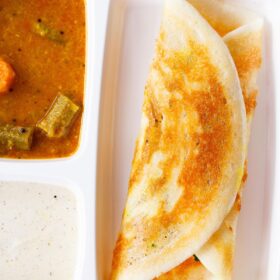
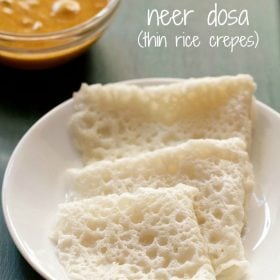
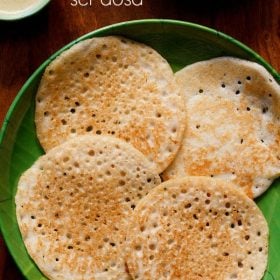
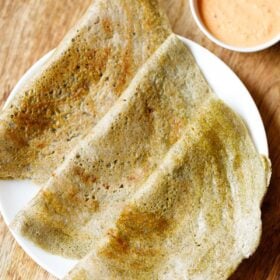
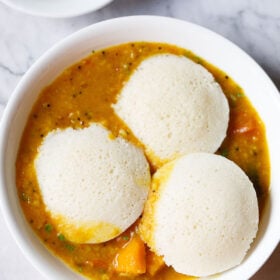
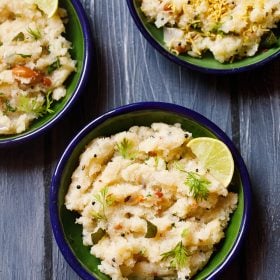
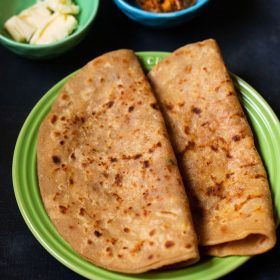








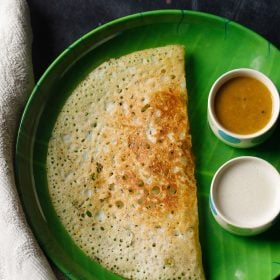
Hey, what could be the substitute for maida?
You can add whole wheat flour or gram flour (besan) instead.
Very good. As I didn’t have maida, tried without adding maida, still turned out good. Thanks Dassana.
thank you for this nice feedback. good to know that even without adding maida, the rava dosa turned good. happy cooking.
Dear dassana first for may God reward for all the hard work you have done to prepare this receipes with pictures in detail and posted it for us Who have never cooked in life. I cook. My own food now by going through your recepies .its so simple to understand and prepare it. I prepared rava dosa and most of my bharaini nationals loved it thank u and God bless
thank you very much. i am so happy that the detailed photos are helping you to cook. a comment like yours really makes me feel good as it fulfills the purpose of making the blog to help and teach people to cook in an online environment. thanks for your kind wishes too.
Dasanna,
I tried your Rava dosa, coconut and red chutney recipe yesterday. It was a super hit. Everyone at my home loved it. Thank you so much for posting amazing recipes.
thanks malvika for this awesome feedback. thanks for the rating too. glad to read. most welcome and happy cooking.
The rava dosai I made following your recipe has been the best by far. Thank you
thanks a lot veena. glad to read your feedback. thanks for the rating too on rava dosai recipe.
Hey there…..I am going to try this recipe tomorrow….very curious about it….but one doubt : can I make dosa a bit more thick ??? Please suggest…If yes then how should I make this….
you can make the batter thick. but a thick batter will give soft rava dosa. just add less water and make a slightly thick or medium consistency batter.
Thanks . This is the perfect recipe for rava dosa .
thank you shradha and welcome.
What else I May Use instead of Rice Flour, please Suggest me
you can use besan (gram flour) instead.
We enjoyed our breakfast , it was so perfect and yummy ???? thank you for sharing the recipe ????
welcome amrutha and thank you.
Hi dassana,
I have tried few recipes.They turned out to be great.Thank you for the detailed and pictorial explanations.
Can we use roasted semolina in this recipe?
Keep up the good work.God bless you.
thanks sowmia for your feedback and kind wishes. you can try using roasted semolina. if it is lightly roasted it is fine, but it should not be completely roasted. the texture of rava dosa is different when roasted rava is added.
Turned out yummy! Thanks Dassana. I’m a big admirer of your recipes plus your way of explaining simply just every single bit one need to know (pre or post or during the recipes). Hats off to the efforts you take. (My first comment ever on your blog :))
thanks harshada for the review as well as rating on rava dosa recipe. i am glad that you are finding the recipes explained well and easy to relate and understand. happy cooking. do comment whenever you have time or have a query.
Tried the rava dosa recipe. Turned out really well. Step by step explanation was very helpful. Buttermilk really adds a nice taste to the dosa. Thank you Dassana.
Welcome Nita. Glad to know that you liked this rava dosa recipe.
I will use a non-stick pan to cook the dosas. Do I need to oil the pan, or can I just bake them in the same way as ‘normal’ crispy dosas?
for rava dosa, you can spread some oil on the pan as the batter is poured and not spread. if you want you can also skip spreading the oil.
Tried this with packaged rice flour but the batter is sticking to the tawa even though I have a heavy bottom tabs and I brush it with oil. The batter sticks and burns. What else can I add to the batter? I tried your rava dosa with poha powder, that came out well. Please advise my batter is sitting in the fridge now.
season the tawa. heat it and spread some oil. keep the flame to a medium or high and let the tawa get hot for 1 minute. lower the flame and then wipe this oil. spread another layer or oil and repeat the process. lower and then again wipe this layer of oil. now spread oil again. make a small dosa. see if it sticks or not. if it sticks then repeat the seasoning method for 1 or 2 times more. initially a few dosas in the beginning will stick, but later they won’t stick. for the tawa also, after rinsing it, wipe it dry and spread a layer of oil. before making dosas, heat and then remove the oil and then start making dosas.
I am increasingly impressed by your recipes! Tried this instant rava dosa recipe today and I was over the moon! Loved the crispness and the taste. Pair d it with home grown Cuban oregano ( doddapatre) chutney… No more Udipi restaurant for Rava dosa at least! Kudos to you for your efforts!!
thank you alice. nice to read your feedback on the recipe. one can easily make hotel style food at home and it costs less than what we shell out in restaurants.